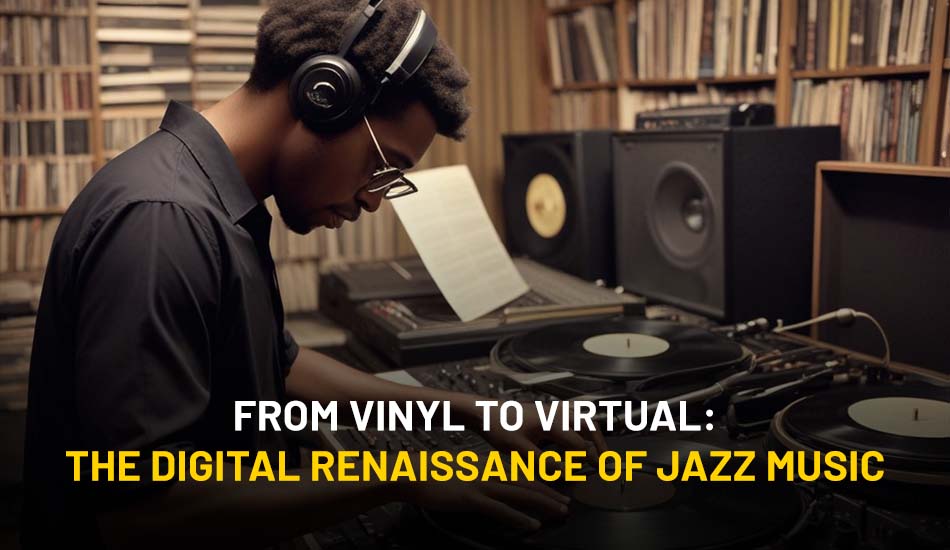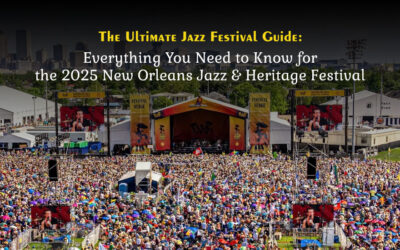Introduction: Jazz in the Digital Age
Jazz music is a lifelong process that goes on, changing along with the times, while at the same time keeping its heartbeat. Through the digital world, technology has become an instrument that triggers innovation, bringing to life new ways of creativity and expression in the jazz community. Starting from the energetic streets of New Orleans to its worldwide popularity now, jazz is still holding the attention of people with its improvisational habits and catchy beats.
Historical Context of Jazz
The realization of the real importance of technology for jazz can be achieved with knowledge of its deep historical background. Jazz was the result of the cultural blending of early 20th-century America, and it was the way through which African Americans expressed themselves. Jazz pioneers like Louis Armstrong and Duke Ellington got their ideas from the blues, ragtime, and spirituals, and thus, they created the base for jazz, which later on, changed the world of music.
Technological Innovations Affecting Jazz
Jazz, throughout its history, has been the one that has accepted technological changes as tools for artistic exploration. From the beginning of the phonograph, which enabled the preservation and wide distribution of jazz recordings, to the emergence of digital audio workstations (DAWs), which transformed the way music is written and produced, technology has been the key to the development of the sound and style of jazz music.
A World of Jazz Music at Your Fingertips
The internet has brought about a change in the way we find and enjoy music, and jazz is not an exception to it. Through platforms such as Spotify, YouTube, and Apple Music, jazz lovers can get a complete collection of jazz recordings from every era and style they can think of. Besides, you can still be a jazz lover or a new guy; the digital age has made it much easier than ever to try jazz music that is so full of tapestries.
Digital Instruments and New Sounds in Jazz Music
Digital technology has brought the sonic possibilities of jazz to new heights, thus, musicians today can experiment with new sounds and textures. Jazz musicians who use electronic keyboards and synthesizers, digital samplers, and drum machines are combining a variety of instruments into their pieces; thus, they are breaking jazz traditions and creating new sonic landscapes.
Online Collaboration and Globalization of Jazz
The internet has united jazz musicians from all across the world, thus, creating a huge platform for collaboration and creativity that has never been seen before. Online platforms like Soundtrap and BandLab allow artists to exchange ideas, record recordings, and collaborate on projects in real-time, thus, they are crossing borders and overcoming cultural differences to create music that is the universal language of jazz.
Social Media and Jazz Artists’ Visibility
Social media has changed the way jazz artists communicate with their fans; thus, they can now get in touch with them directly, promote their music, and show the viewers the behind-the-scenes of their process. Instagram, Twitter, and Facebook are now the main tools for the creation of a fan base and the creation of a sense of community in the jazz community.
Jazz Education Online
Nowadays, the digital age has made access to jazz education easy, cheap, and widespread; thus, students can easily and cheaply get the learning resources that they need. Online courses, tutorials, and virtual masterclasses are the way to learn jazz theory, technique, and improvisation from world-famous artists and educators, hence, the new generation of jazz musicians can polish their craft and realize their creative potential.
AI and Generative Jazz Music
The use of AI is ready to transform the manner of music creation and consumption, and jazz is also not excluded from it. AI-generated jazz may not have the human touch and emotional depth of traditional jazz, but it is interesting to see the possibilities for collaboration and experimentation in the creative process. Through the use of machine learning algorithms, jazz musicians can discover new ways of expression and break the limits of what is possible in jazz composition and performance.
Enhanced Live Performances and Virtual Reality
Technology has brought a huge change to the live jazz experience, thus, it has made the physical world and the virtual world blend into each other. HD audio/video gadgets and immersive VR technology enable the listeners to feel the live jazz events in a realistic way, no matter where they are. Virtual reality concerts like those by MelodyVR give fans an immersive and interactive way of enjoying jazz music. This way, they will feel as if they are in the front row of their favorite jazz club or festival.
Changes in Jazz Composition and Production
The combination of electronic parts and digital production methods has caused a rebirth of jazz composition and production. Artists nowadays are the ones who use synthesizers, samplers, and digital effects to make new sounds and textures, which in the end makes the lines between genres blur, and pushes the boundaries of traditional jazz conventions to the other side. The digital age has been the source of a wide variety of new possibilities for creative expression within the jazz community, ranging from experimental electronic jazz to the fusion of genres.
Cultural Implications of Digital Jazz
Digital jazz has been a major cultural factor as it has managed to connect the past and the present by keeping the essence of jazz while at the same time bringing something new into the picture. It is now a means of social criticism and cultural interaction, which shows the variety and change of modern society. Through the use of technology, jazz keeps on growing and adjusting to the changing times, thus, new types of expressions are being created and the limits of what can be done in music are being pushed.
Future Trends in Jazz and Digital Technology
In the coming days, jazzing in the digital world will be full of opportunities. Starting from AI-assisted composition to immersive virtual reality experiences, technology will be a major player in the process of jazz evolution; hence, new generations of musicians and listeners will be inspired. While we are experiencing the digital renaissance of jazz music, let us appreciate its still-existing legacy and cultural importance, thus making it a still-vibrant and vital art form for generations to come.
FAQs:
How did jazz change the world of music?
Jazz changed music by having improvisation, syncopation, and a special way of rhythm and expression. It was detached from the classical European musical forms, it was the African-American influences and cultural traditions that were its main source of inspiration. Jazz, which focuses on individual creativity and collective improvisation, has been challenging the traditional ideas of composition and performance, therefore, new genres and styles of music have been created.
What new technology was responsible for the musical revolution and the spread of jazz?
The phonograph, a product of Thomas Edison in the late 19th century, was the main reason for the spread of jazz music. It led to the recording and reproduction of the sound that triggered the love for jazz music songs that could be heard even more than those that were performed live. On the contrary, radio broadcasting was the invention of the early 20th century, which also made jazz the famous one, and consequently, the musicians could present their talent all over the world to the listeners.
What was the role of the invention of new recording devices in the jazz of the 1950s?
In the 1950s, recording technology was greatly improved, and magnetic tape recording was the main cause of this. Hence, this invention resulted in the creation of high-quality audio recordings and freedom in the studio. Jazz musicians used these innovations to try multitrack recording, overdubbing, and editing techniques; thus, they got more polished and sophisticated jazz recordings. Jazz at this age also came into existence with the emergence of famous jazz labels such as Blue Note and Verve, which had a great influence on the creation and style of jazz music during this time.
Conclusion
In a nutshell, the digital renaissance of jazz music is the fusion of the old and the new, which proves that the genre can change and grow with the times. Through the digital age, the music of jazz still remains a source of inspiration and cultural expression and is thereby reaching many people from all regions of the world, transcending the distance of countries.
Thanks to the progress of technology and online platforms, jazz has developed new ways of collaboration, education, and performance, thus ensuring its survival in the digital age and after. Technology has not only widened the audience for modern jazz music but has also deepened our love for its everlasting beauty and the universality of its appeal, thus confirming its position as a lively and important art form for future generations.




